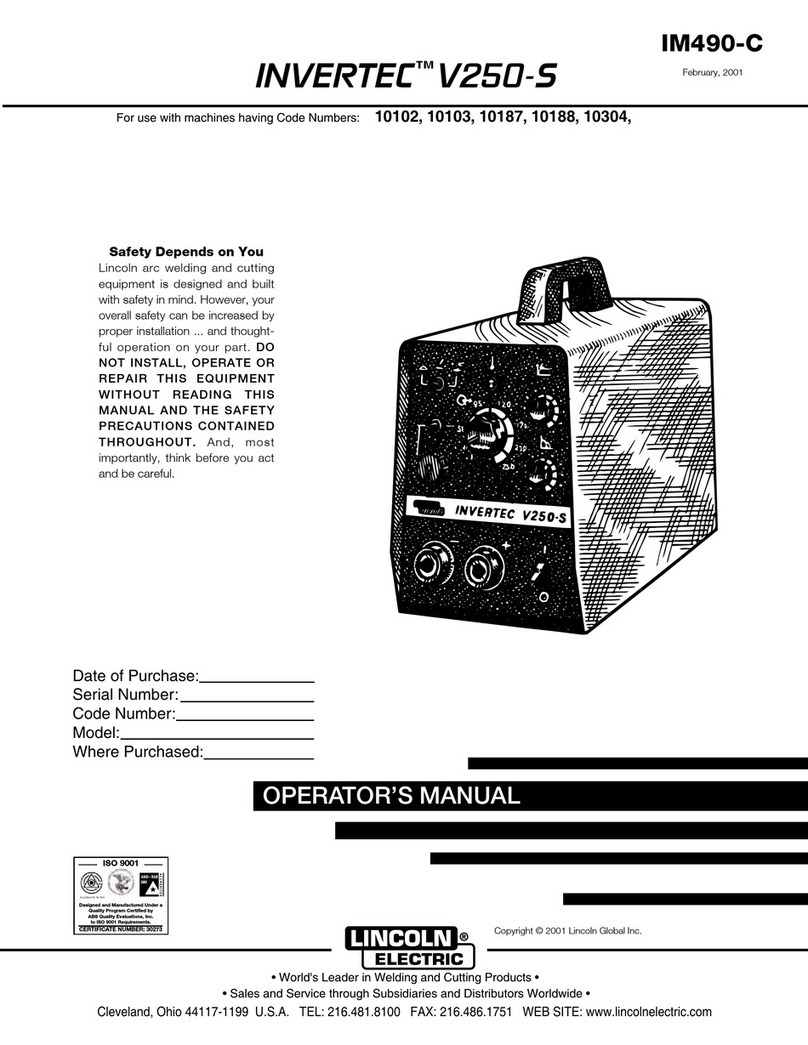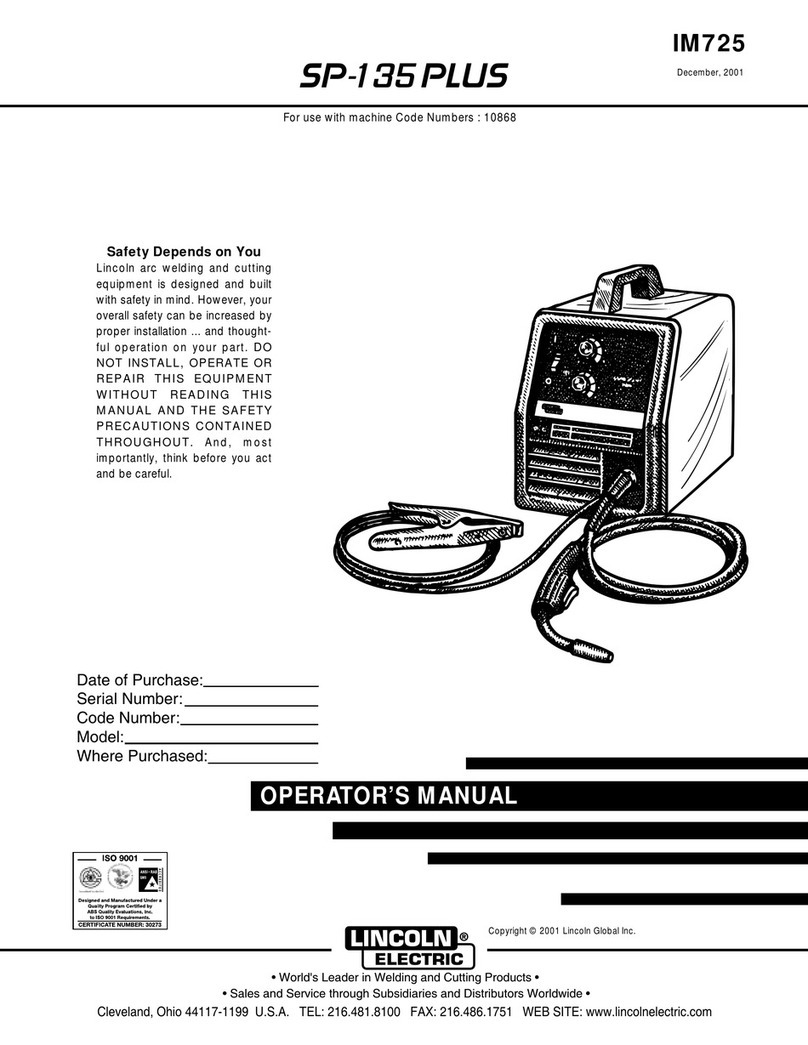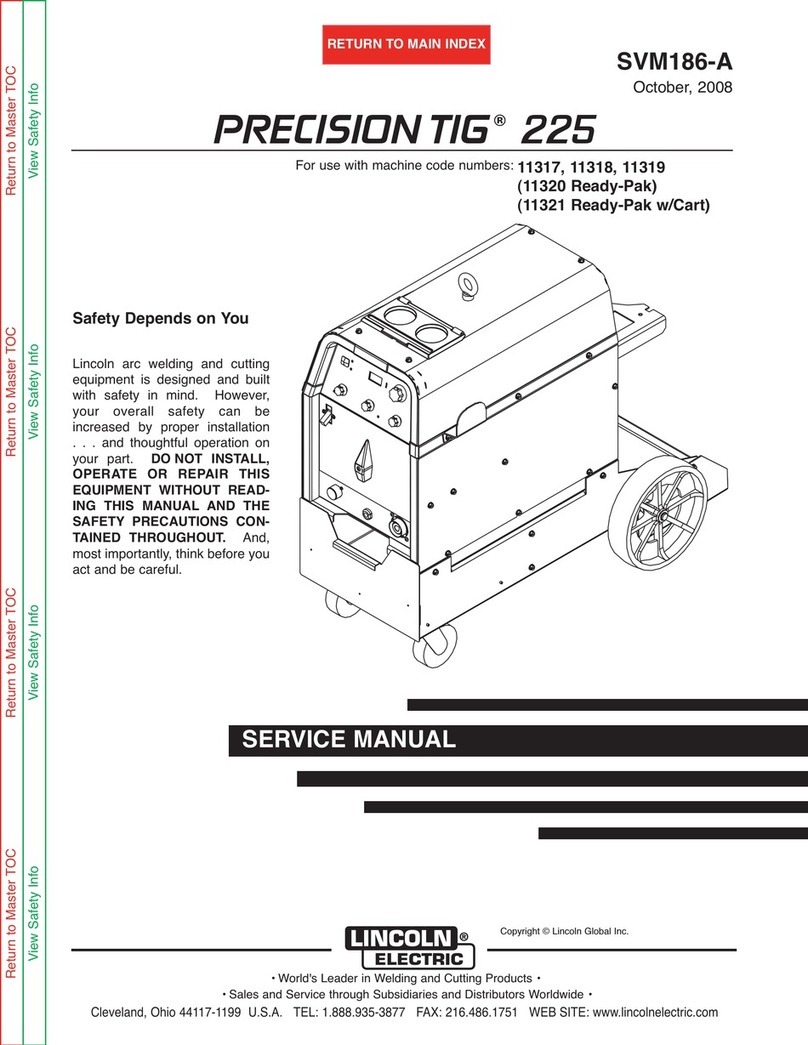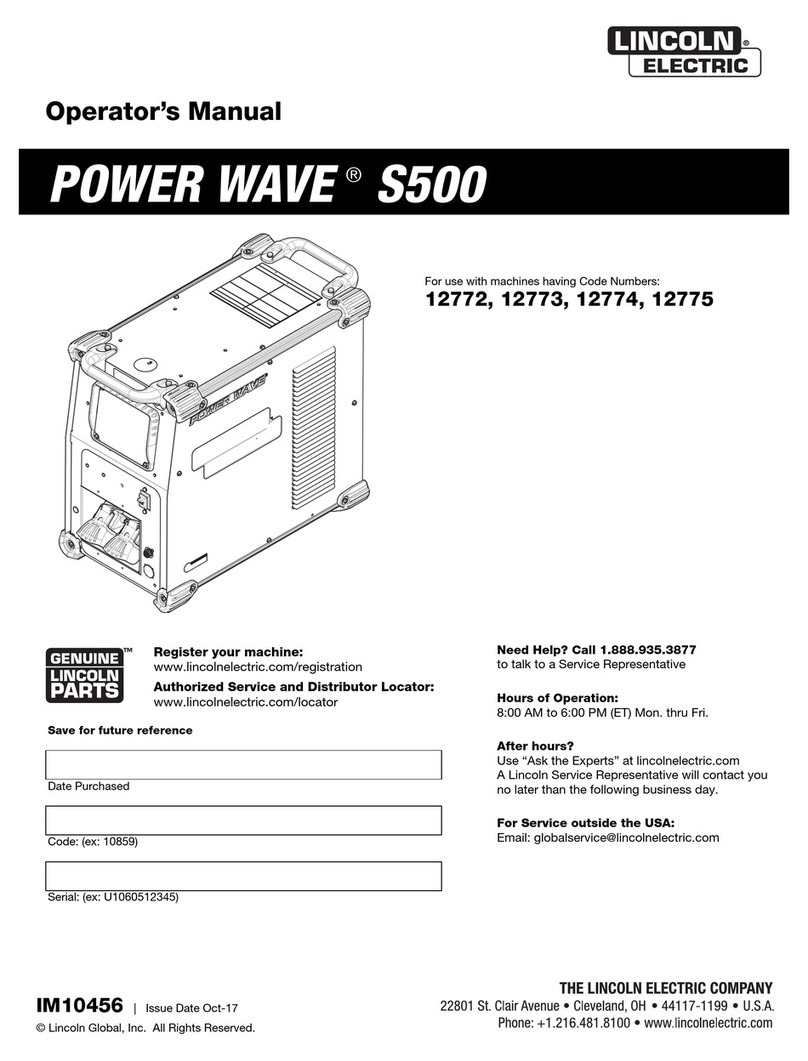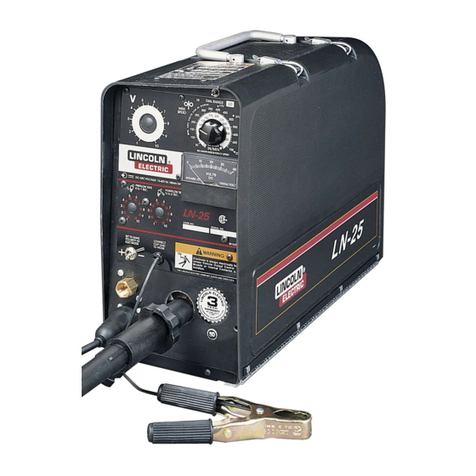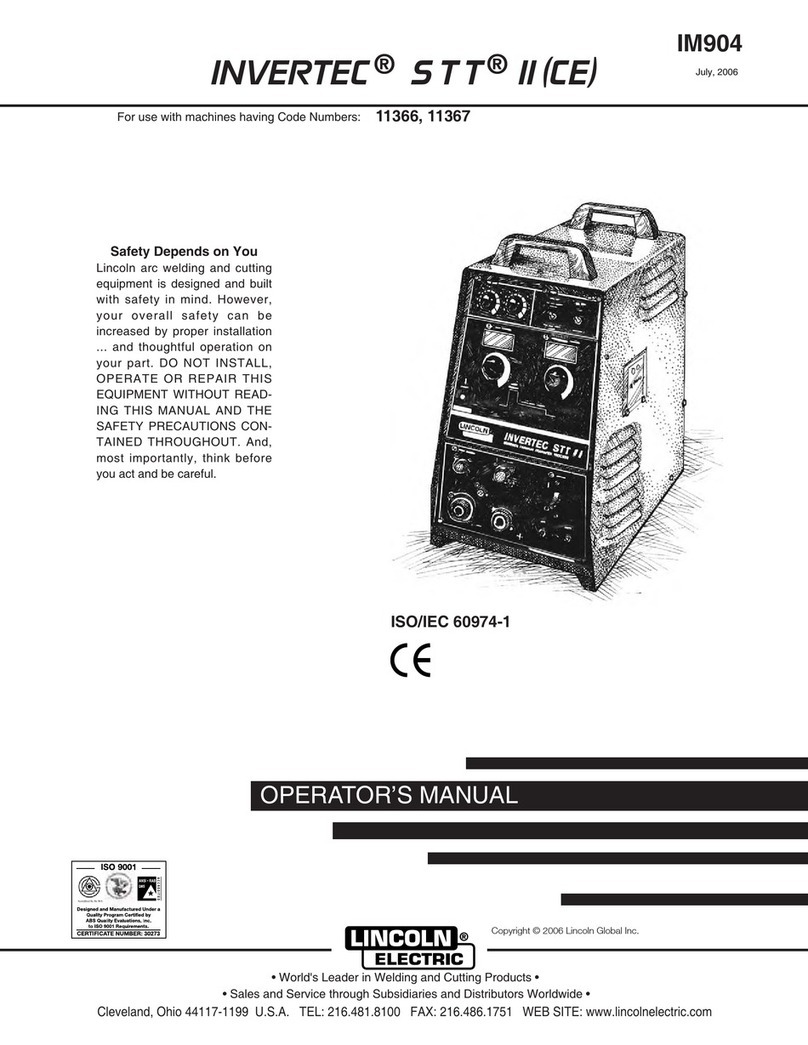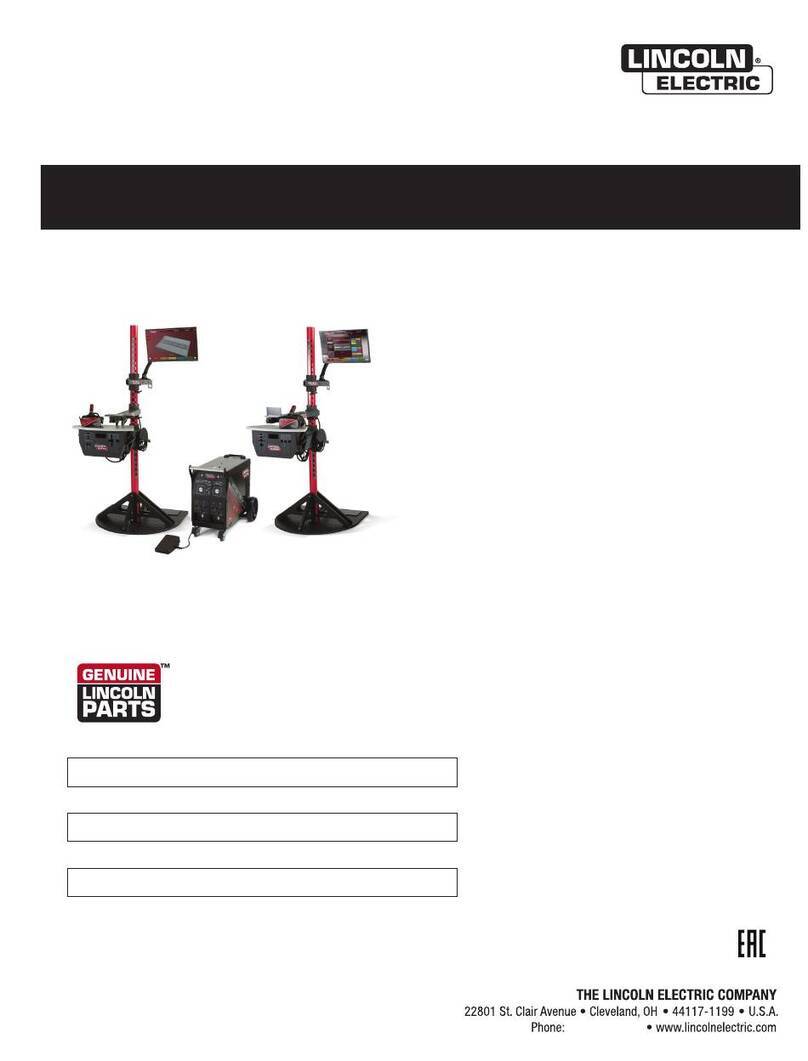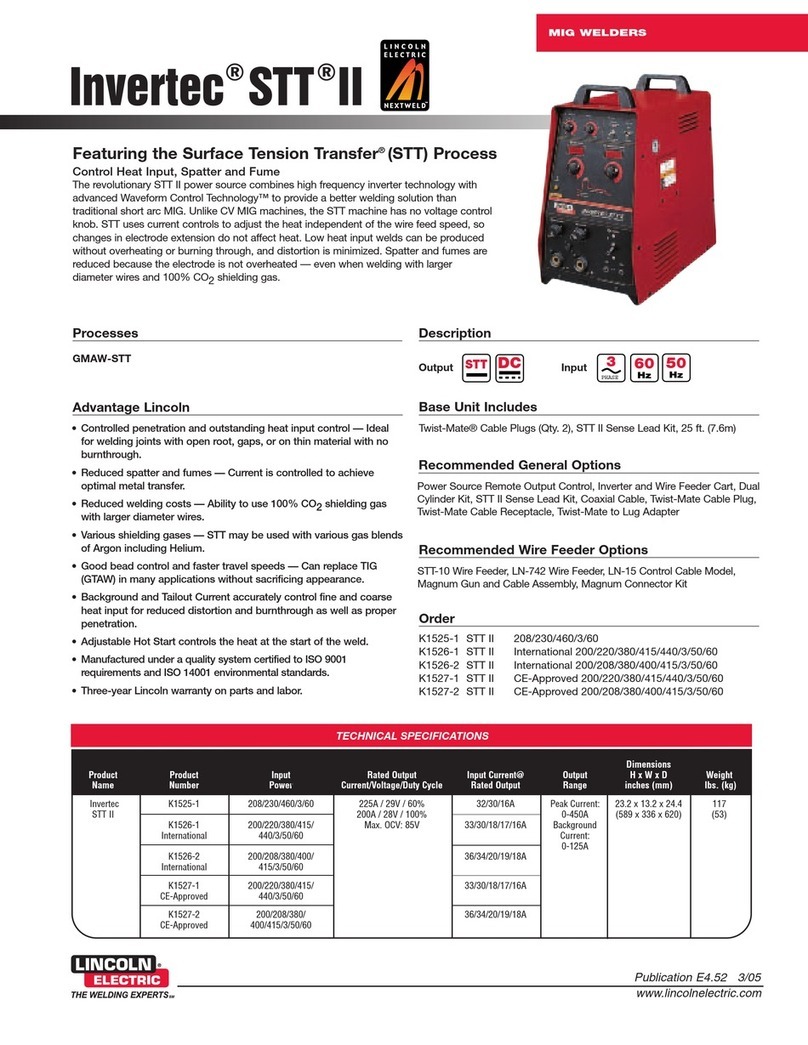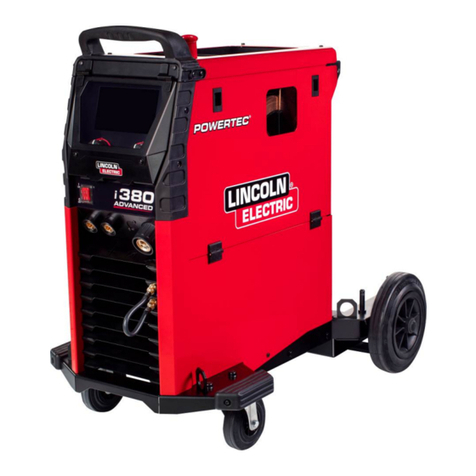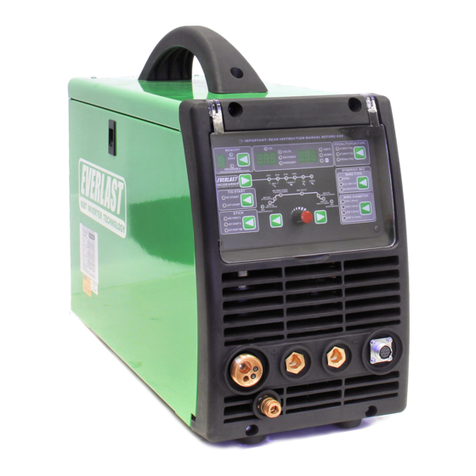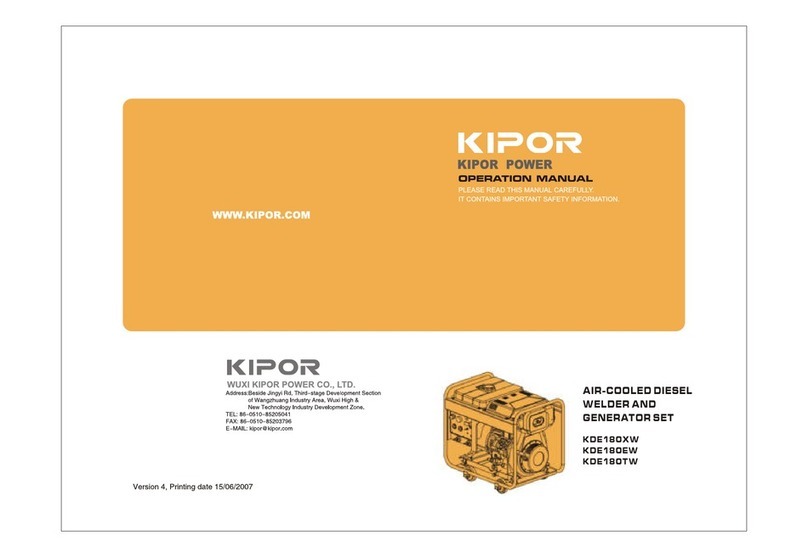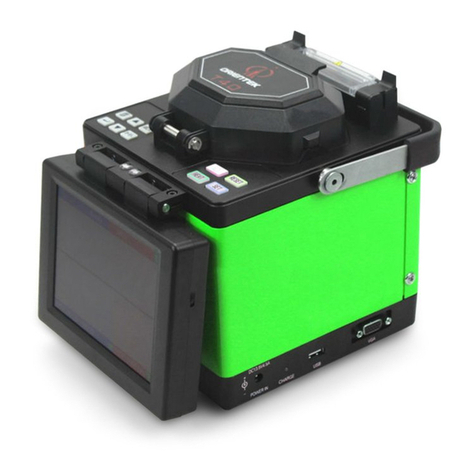
)*/
99 99
ARC RAYS c n burn.
4.a. Use a shield with the proper filter and cover
plates to protect your eyes from sparks and
the rays of the arc when welding or observing
open arc welding. Headshield and filter lens
should conform to ANSI Z87. I standards.
4.b. Use suitable clothing made from durable flame-resistant
material to protect your skin and that of your helpers from
the arc rays.
4.c. Protect other nearby personnel with suitable, non-flammable
screening and/or warn them not to watch the arc nor expose
themselves to the arc rays or to hot spatter or metal.
ELECTRIC SHOCK c n kill.
3.a. The electrode and work (or ground) circuits
are electrically “hot” when the welder is on.
Do not touch these “hot” parts with your bare
skin or wet clothing. Wear dry, hole-free
gloves to insulate hands.
3.b. Insulate yourself from work and ground using dry insulation.
ake certain the insulation is large enough to cover your full
area of physical contact with work and ground.
In ddition to the norm l s fety prec utions, if welding
must be performed under electric lly h z rdous
conditions (in d mp loc tions or while we ring wet
clothing; on met l structures such s floors, gr tings or
sc ffolds; when in cr mped positions such s sitting,
kneeling or lying, if there is high risk of un void ble or
ccident l cont ct with the workpiece or ground) use
the following equipment:
• Semi utom tic DC Const nt Volt ge (Wire) Welder.
• DC M nu l (Stick) Welder.
• AC Welder with Reduced Volt ge Control.
3.c. In semiautomatic or automatic wire welding, the electrode,
electrode reel, welding head, nozzle or semiautomatic
welding gun are also electrically “hot”.
3.d. Always be sure the work cable makes a good electrical
connection with the metal being welded. The connection
should be as close as possible to the area being welded.
3.e. Ground the work or metal to be welded to a good electrical
(earth) ground.
3.f.
aintain the electrode holder, work clamp, welding cable and
welding machine in good, safe operating condition. Replace
damaged insulation.
3.g. Never dip the electrode in water for cooling.
3.h. Never simultaneously touch electrically “hot” parts of
electrode holders connected to two welders because voltage
between the two can be the total of the open circuit voltage
of both welders.
3.i. When working above floor level, use a safety belt to protect
yourself from a fall should you get a shock.
3.j. Also see Items 6.c. and 8.
FUMES AND GASES
c n be d ngerous.
5.a. Welding may produce fumes and gases
hazardous to health. Avoid breathing these
fumes and gases. When welding, keep
your head out of the fume. Use enough
ventilation and/or exhaust at the arc to keep
fumes and gases away from the breathing zone. When
welding with electrodes which require speci l
ventil tion such s st inless or h rd f cing (see
instructions on cont iner or MSDS) or on le d or
c dmium pl ted steel nd other met ls or co tings
which produce highly toxic fumes, keep exposure s
low s possible nd within pplic ble OSHA PEL nd
ACGIH TLV limits using loc l exh ust or mech nic l ven-
til tion. In confined sp ces or in some circumst nces,
outdoors, respir tor m y be required. Addition l pre-
c utions re lso required when welding on g lv nized
steel.
5. b. The operation of welding fume control equipment is affected
by various factors including proper use and positioning of the
equipment, maintenance of the equipment and the specific
welding procedure and application involved. Worker expo-
sure level should be checked upon installation and periodi-
cally thereafter to be certain it is within applicable OSHA PEL
and ACGIH TLV limits.
5.c.
Do not weld in locations near chlorinated hydrocarbon
vapors
coming from degreasing, cleaning or spraying operations.
The heat and rays of the arc can react with solvent vapors
to
form phosgene, a highly toxic gas, and other irritating prod-
ucts.
5.d. Shielding gases used for arc welding can displace air and
cause injury or death. Always use enough ventilation,
especially in confined areas, to insure breathing air is safe.
5.e. Read and understand the manufacturer’s instructions for this
equipment and the consumables to be used, including the
material safety data sheet ( SDS) and follow your
employer’s safety practices. SDS forms are available from
your welding distributor or from the manufacturer.
5.f. Also see item 1.b.



